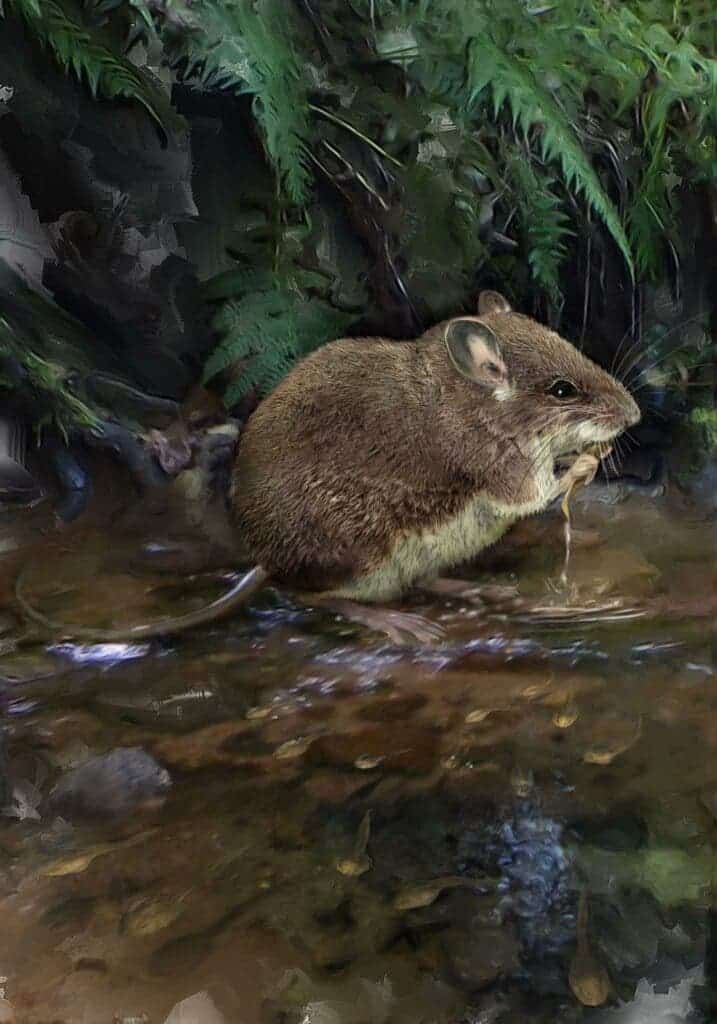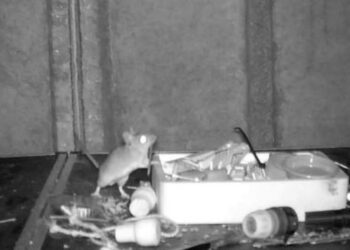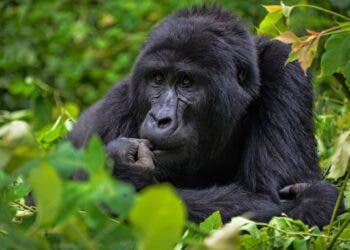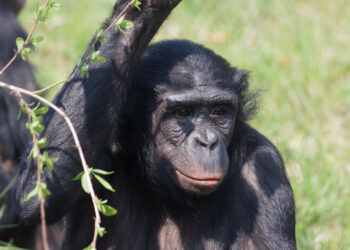
Almost a century ago, biologists described an odd new mouse genus, called Nilopegamys, that lived in Ethiopian streams based on a single collected specimen. By the looks of it, it is one of the most adapted rodents to aquatic living, having a beautiful water-resistant fur and relatively long, broad feet. No other specimen had been sighted since then, and scientists now fear it is extinct.
But, in a new study, an international group of scientists led by biologists at Chicago’s Field Museum of Natural History claim they’ve identified two new species belonging to a related genus of African semi-aquatic mice, known as Colomys.
“We embarked on this study to understand the evolutionary relationships among the two genera of African semi-aquatic mice. These include: the genus Nilopegamys, which is known by a single specimen collected almost 100 years ago in Ethiopia and the much more widespread genus Colomys, mostly distributed within the Congo basin but with populations in east and west Africa. We also aimed to determine if there was any undescribed diversity within the genus Colomys (i.e., new species),” Julian Kerbis Peterhans, Adjunct Curator at the Negaunee Integrative Research Center at the Field Museum, told ZME Science.
Swimming rodents in one of the world’s richest biodiversity hotspots
For the last three decades, Peterhans has been doing challenging fieldwork in the Congo Basin, an amazingly rich biodiversity hotspot, setting up traps and studying various rodents. In their new study, Peterhans and colleagues at The Field Museum, the University of California San Diego, DR Congo, and Kenya, focused on Nilopegamys and Colomys.
Nilopegamys, which means ‘mouse from the source of the Nile’, has been described from a single specimen in 1927, which is housed at the Field Museum. Colomys is active in the wild, but still highly elusive due to its habitat. These cute mice use their kangaroo-like elongated feet to wade through shallow streams on the prowl for water-dwelling insects like caddisfly larvae.
“After I caught my first semi-aquatic mouse over 30 years ago I was hooked. I have most often caught them at the edge of pristine shallow streams or on rocky or sandy outcrops within, often with light only trickling through. When I caught my first one I thought it to be the most beautiful mouse I had ever seen with a striking contrast between a white belly and black or grey back. Feet exceptionally elongate. Fur velvety, soft, and water-resistant,” Peterhans told me in an email.
“The genus Colomys is quite rare in collections because their density is low compared to more traditionally terrestrial mice. Collectors do not realize traps need to be placed within or on the edge of streams. But assuming their streams remain unpolluted and forest remains intact, they will not be threatened. However, mining for gold and coltan and general forest degradation are their major threats.”
“Sadly, the genus Nilopegamys may be extinct as their habitat near Lake Tana in Ethiopia is completely degraded. The only chance for their existence is to survey any intact habitats along the Blue Nile in Ethiopia as it descends to meet the White Nile in Sudan,” he added.
Stalking mice in the bush
In order to catch Colomy mice, the researchers had to maneuver through rough and swampy terrain, often traveling through water up to the waist. “And you can have torrential rain in the tropics, so sometimes half the traps get swept away, and you have to go downriver to try to find them,” Terry Demos, a postdoctoral researcher at the Field Museum and another of the paper’s authors, said in a press release. But the wet terrain was often the least of their worries.
“Memorable moments can be horrific, delightful and are limitless: medical evacuation due to depleted oxygen (histoplasmosis), local militias kidnapping and killing Congolese colleagues, 3-4 day hikes through the bush in order to find suitable habitat to collect specimens, delight in working with host-country colleagues, a hot cup of coffee at 7 am after checking traplines, crossing the Semliki River with a single outboard motor strapped to the canoes and wooden planks supporting two vehicles, the first time terror of hearing the screeching tree hyrax at nightfall,” said Peterhans.
Using specimens they collected during fieldwork in the Congo and those already in museum collections, the researchers compared the rodents’ physical traits and sequenced their DNA.
These analyses revealed two new species that hadn’t been described before: Colomys lumumbai and C. wologizi, after Congolese independence leader Patrice Lumumba and Liberia’s Wologizi Mountains, respectively. What’s more, genetic data enabled the researchers to promote the subspecies Colomys gosling eisentrauti from the Bamenda Highlands of Cameroon to full species status (Colomys eisentrauti).
“One new species we described (Colomys lumumbai) is nearly indistinguishable from its closest relative (Colomys goslingi) and only through the genetic work and careful morphological analyses of skull measurements were we able to tease this species apart,” Peterhans said.
That’s not all. One of the team’s members, Tom Giarla, who is an assistant professor of biology at Siena College in New York, also endeavored to sequence the DNA from the dried tissue of the skull of the 93-year-old Nilopegamys specimen. Preparing and sequencing DNA this old is no trivial task, but Giarla’s expertise shined. “I was stunned that I actually got it to work on my first try,” Giarla proudly stated, whose genetic wizardry showed that Nilopegamys is a sister genus to Colomys. In other words, the two genera are very closely related.
Learning such new things about mice living in streams in the African rainforests is just the tip of the iceberg. These areas are home to a wide range of animal species, many of them new to science. But due to the rugged habitat, poor infrastructure, and political instability, scientists face many challenges.
In the age of the COVID-19 pandemic, such efforts should be supported more. The coronavirus is zoonotic, meaning it first evolved in an animal species before jumping to humans. Such is the case for Ebola and HIV, too.
“The rainforests of the Congo Basin and surrounding highlands are incredible hotspots of tropical diversity but are also under great threat of habitat destruction. We strongly suspect many new species are awaiting discovery, including the relatively well known small mammals. Based on our work to date dozens of new species of rodents await discovery along with many species of bats, shrews and other small mammals. These findings are critical for informed conservation of the Congo rainforests,” said Peterhans.
“In this day of climate change, the spread of zoonotic disease and global mass extinction, studies such as ours are at a premium. Global biodiversity must be documented. Every species has a unique genetic toolkit in fighting disease, and interacting with the environment and competitors. Every species is also a canary in the coal-mine speaking to the vulnerability of local climates and habitats. There remains much more to explore in Africa where species numbers are greatly increasing despite severe habitat degradation. This year’s expeditions to Africa have been sadly postponed due to COVID; every year counts,” he concluded.






